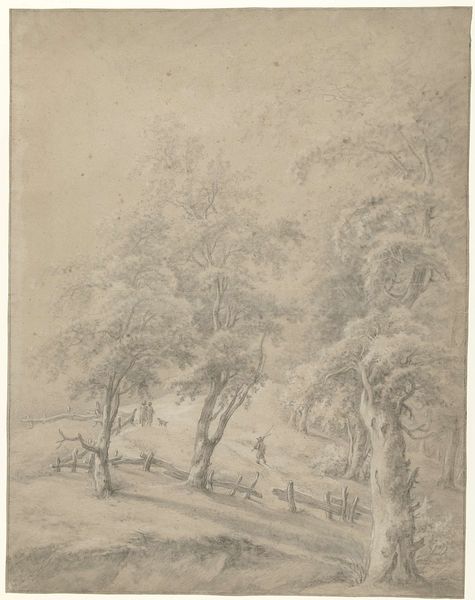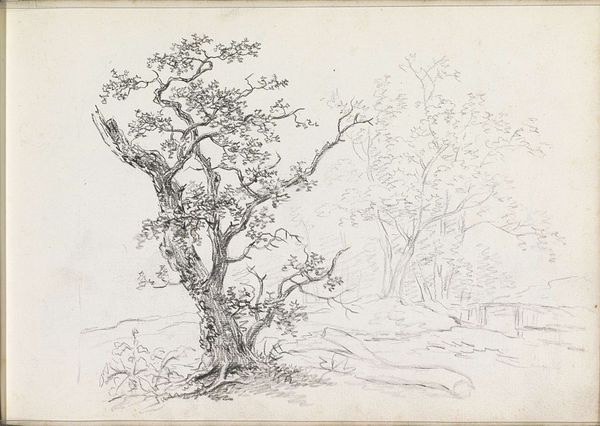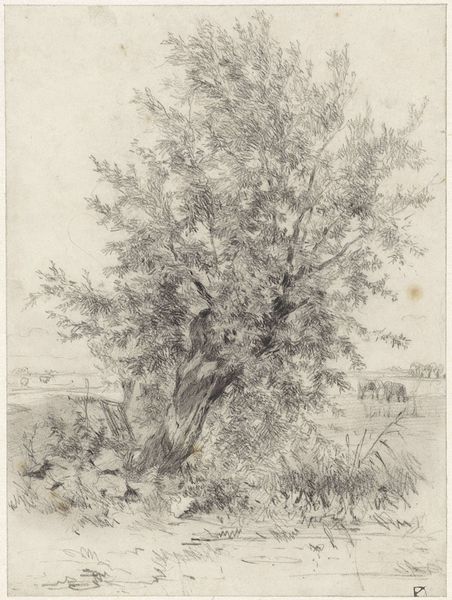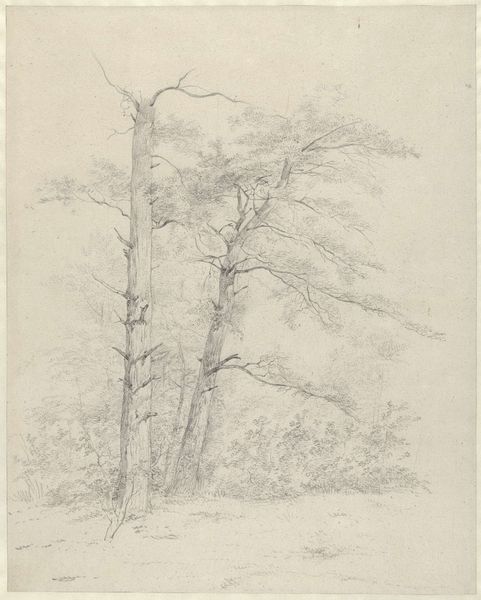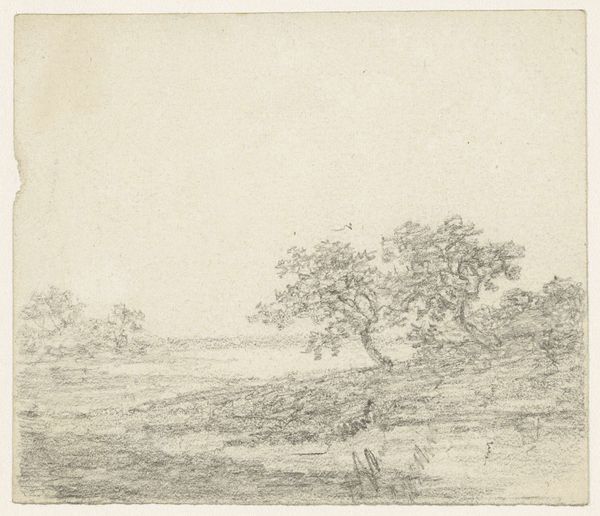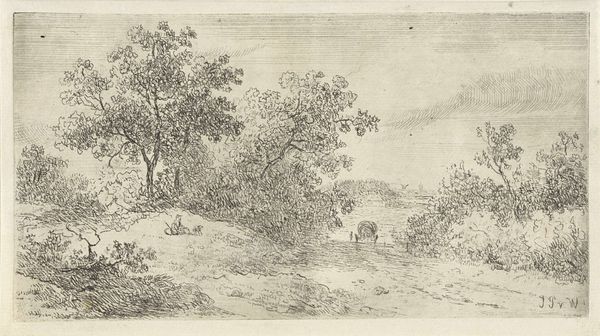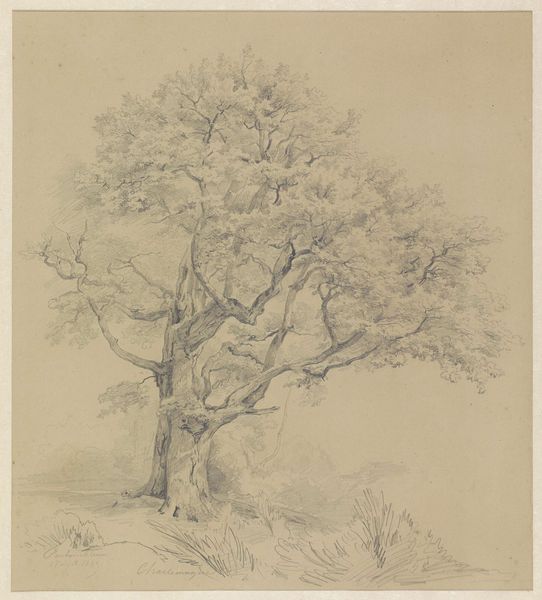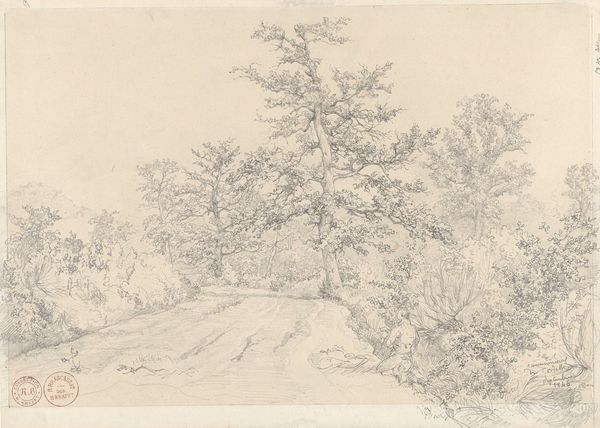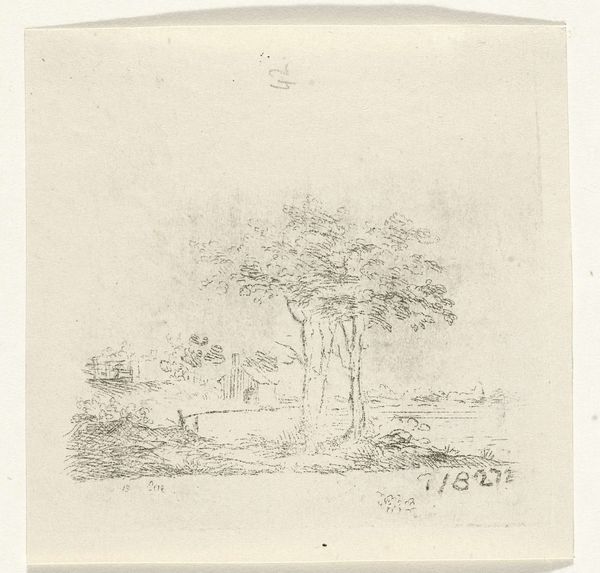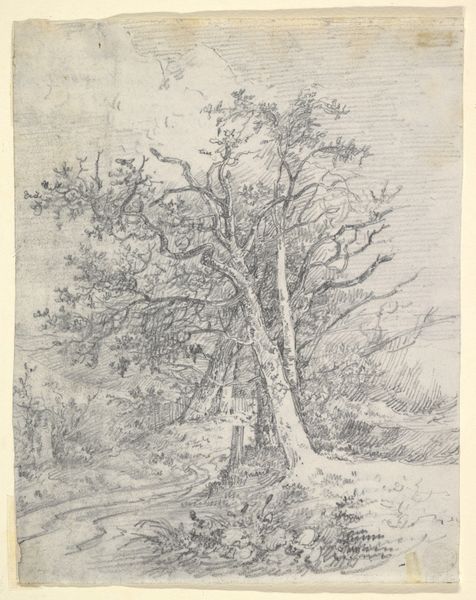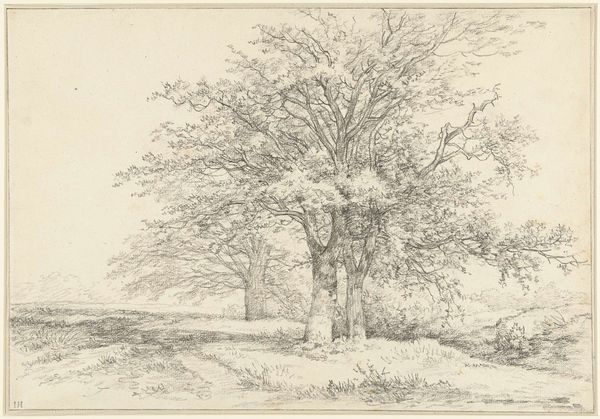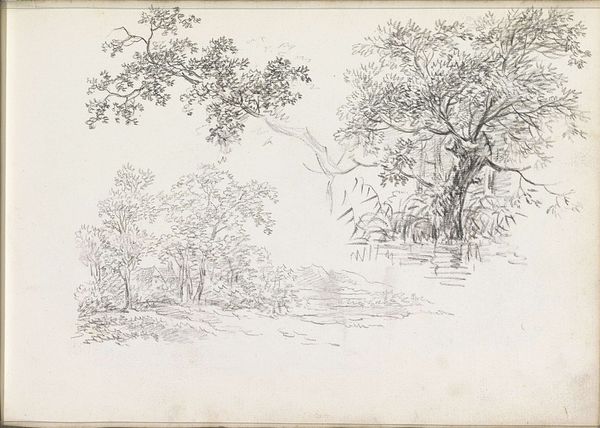
Dimensions: height 422 mm, width 339 mm
Copyright: Rijks Museum: Open Domain
Editor: We’re looking at Paul Joseph Constantin Gabriël's "Landscape with Oak" from 1857, done in pencil. It’s a fairly simple scene, almost dreamlike, with soft, hazy details. How do you interpret this work? Curator: I see it as a product of its time, deeply rooted in the 19th-century Dutch landscape tradition. It invites us to consider the Romantic ideals prevalent then. What role did nature play in shaping national identity during that period? Think about how landscape painting became intertwined with notions of freedom and belonging. The solitary oak becomes more than just a tree, doesn't it? It becomes a symbol. Editor: A symbol of…resistance, maybe? Given the social upheaval happening then? Curator: Exactly! Or perhaps resilience. Consider the oak's symbolism across cultures: strength, endurance, a silent witness to history. Now, factor in Gabriël's artistic choices: the delicate rendering, the muted tones. Does that change your perception? Editor: I guess it softens the "resistance" aspect. It feels more…melancholic. Like a quiet commentary rather than a call to arms. Curator: Precisely. And isn’t that often how social critique manifests? Not always in grand pronouncements, but in subtle observations, in the quiet beauty of a lone tree standing against the winds of change. The political is personal. Editor: I never considered landscape as a form of political statement. I always saw it as…picturesque. This gives me a lot to think about. Curator: Art historical narratives are always up for interrogation. Seeing art through an intersectional lens challenges established meanings and reveals hidden power dynamics within the art world.
Comments
No comments
Be the first to comment and join the conversation on the ultimate creative platform.
